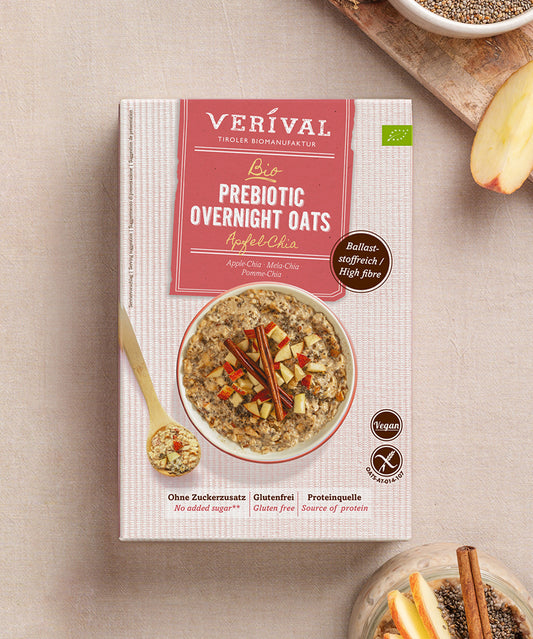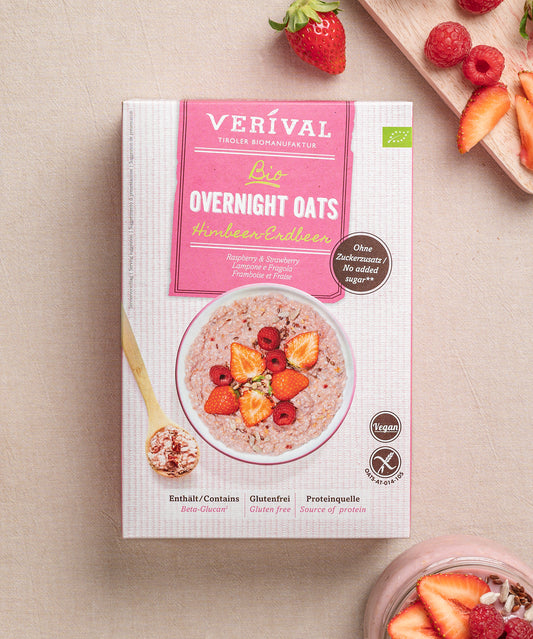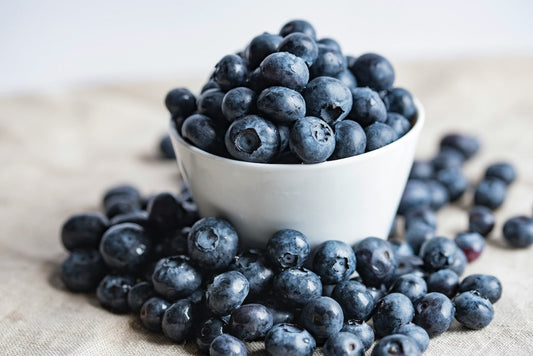Calculate your basal metabolic rate – your basal metabolic rate is the number of calories you burn at rest. That is, without any activity, just maintaining your bodily functions. The calorie calculator, on the other hand, describes your calorie requirement throughout the day, including physical activity.
Are you active in sporting activities? Do you try to eat healthily? Do you want to lose a few pounds? But somehow your weight always stays the same?
This can be quite demotivating, and you keep asking yourself what the reason might be.
We have the answer: every person is individual and we all have a complex digestive and metabolic system. It is important to know how these systems work. Accordingly, a nutrition plan should be structured.
To lose weight healthily, you should understand how the body works and what it needs.
Factors such as age and gender influence the body's daily calorie consumption and requirements. These factors determine the so-called basal metabolic rate.
When your basal metabolic rate decreases, it means that you need fewer calories per day and thus require less energy.
So if you don't eat enough, your body switches to ‘ economy mode ’ to keep itself alive. Despite all your efforts and calorie counting, you don't lose any weight. That sounds pretty complicated, doesn't it?
But it's not really. You first need to find out what your basal metabolic rate is and how to calculate it. This works with a simple basal metabolic rate calculator.
So if you want to understand how your body works and how you can lose weight, just read on.
Click here for the VERIVAL calorie calculator.
What is the basal metabolic rate?
In specialist journals and guidebooks, there is often talk of the basal metabolic rate. But what does the basal metabolic rate actually say?
Basal metabolic rate is sometimes also called resting energy expenditure. This refers to the amount of energy that your body needs to maintain its functioning during a day when you are completely at rest (resting state).
In short, basal metabolic rate is the energy that a body needs in one day to function, i.e. your daily calorie requirement. Together with the active metabolic rate, they add up to the total energy expenditure.
Of course, everyone's energy needs are different. The following factors influence your basal metabolic rate:
- Gender
- Age
- Weight
- Height
- Muscle activity (occupation, recreational sports)
How can I calculate my basal metabolic rate?
You are probably wondering how to calculate your basal metabolic rate and what it is.
Calculating your basal metabolic rate – the Harris-Benedict formula
Of course, mathematics has long since developed a formula for calculating the basal metabolic rate. The so-called ‘ Harris-Benedict formula ’ is as follows:
Basal metabolic rate formula for men
Basal metabolic rate [kcal/24 h] = 66.47 + (13.7 x body weight in kg) + (5 x height in cm) – (6.8 x age in years)
Basal metabolic rate formula for women
Basal metabolic rate [kcal/24 h] = 655.1 + (9.6 x body weight in kg) + (1.8 x height in cm) – (4.7 x age in years)
The result of this calculation is a guideline of the calories an individual needs per day. You can use this simple formula to calculate your basal metabolic rate yourself.
A sample calculation: using the Harris-Benedict formula, a 30-year-old man who is 1.80 metres tall and weighs 80 kilograms has a basal metabolic rate of approximately 1606 calories.
The only variables in the formula that can be changed are body weight and body fat percentage. Muscle mass also influences the basal metabolic rate, although it is not taken into account in the formula.
Calculate basal metabolic rate using the Mifflin-St.Jeor formula
The Mifflin-St.Jeor formula is a newer formula for calculating basal metabolic rate. It was proposed in 1990 by Mifflin and St.Jeor. It is now the most commonly used.
Mifflin-St. Jeor formula for men:
Basal metabolic rate = (10 x body weight in kg) + (6.25 x height in cm) – (5 x age in years) + 5
Mifflin-St. Jeor formula for women:
Basal metabolic rate = (10 x body weight in kg) + (6.25 x height in cm) – (5 x age in years) – 161
Calorie requirement, basal metabolic rate, active metabolic rate and total metabolic rate – the differences
It all sounds pretty simple, doesn't it? But is there perhaps a catch after all? – Maybe just a little. The formula may sound simple, but it only calculates the basal metabolic rate and ignores an important component: the active metabolic rate.
The active metabolic rate is the calorie requirement that the body needs for additional activities, such as work performance or physical activities such as sports and leisure activities. The active metabolic rate is also calculated using a value, the so-called PAL value (physical activity level).
Only the value of the basal metabolic rate in combination with the PAL value gives the total metabolic rate, which describes the total amount of energy that a body consumes in a day.
So, on the one hand, you need the value of the basal metabolic rate and, on the other hand, the value of the active metabolic rate in order to calculate your own calorie consumption.
Calorie calculator – calculate your personal calorie requirement
Would you like to know your body's total metabolic rate without complicated calculations? – We have the simple solution. Calculate your daily basal metabolic rate with the VERIVAL calorie calculator :
The VERIVAL calorie requirement calculator calculates your personal calorie requirement in just a few moments, based on your age, gender, height and weight in kg.
In addition, your physical activities are also taken into account and you get the exact value for your daily calorie requirement. Try it out for yourself!
The calorie calculator from VERIVAL
The basal metabolic rate when losing weight
By calculating your daily calorie requirement, you now know how much your body burns per day.
But your primary goal is to lose weight, right? To do that, you need to implement an important component: you need to create a calorie deficit.
This means that you need to consume fewer kilocalories (kcal) than your body uses in a day.
So, to lose weight, you need to cut down on calories to avoid storing additional energy in the form of body fat.1 But now the question is: how do you do that?
Can I increase my basal metabolic rate and thus my calorie consumption through exercise?
Sport is, of course, an important starting point for achieving your dream body. Even small, regular workouts of between 30 and 60 minutes help the body to burn more fat.
Especially if your job is mainly sedentary, sport will help you to boost your metabolism and thus your fat burning.
What's more, sport is also good for your mental health. Just 2-3 sessions of sport per week can help you lose weight.
Nevertheless, bear in mind that with more muscle mass you have a higher basal metabolic rate. Muscles are metabolically active, so your body uses more energy even when you are completely at rest.
Try the VERIVAL calorie calculator now
The role of thermogenesis in basal metabolic rate
Sport is not the only important component of losing weight. A healthy diet is much more important. This is where so-called thermogenesis comes into play, which simply means heat generation.
Thermogenesis basically describes nothing more than the effect of the nutrients in food on our body.
So different foods have different effects on our body and are also processed and burned differently.
For example, an increased intake of fatty foods has different effects on our body than the intake of fruit and vegetables.
Thus, every food you eat has a different influence on your body, as well as calorie consumption and metabolism .
Covering your basal metabolic rate with healthy calories
However, this should by no means mean that you can no longer eat certain foods at all in order to lose weight . On the contrary: a balanced diet and, above all, a healthy breakfast are important and right.
You can and should eat everything, the only thing that is important is that you don't eat too much of any one food. Because there are better and worse calories and to lose weight you should try to cover your basic metabolic rate with healthy calories - in other words, to pay attention to a healthy energy intake - not just to the amount of calories.
In the supermarket, it is often difficult to separate the healthy calories from the unhealthy ones, because many seemingly ‘healthy’ foods contain unhealthy ingredients that you usually can't even recognise by taking a close look at the ingredient list.
But not in our VERIVAL range. All our products are 100% organic and contain no hidden ingredients. In addition, all products are processed regionally in Tyrol.
With our products such as muesli, oats and porridge, you can start the day full of power and energy.
You support your body by providing it with a healthy and valuable calorie intake, thus gaining lasting energy for your day.
In addition, you are satiated and do not feel the need for unhealthy snacks.
We provide you with all the nutrients you need and you will soon realise that your weight will also decrease as a result of the new, balanced nutrition. In the long term, you can also counteract the yo-yo effect.
The VERIVAL calorie calculator
- 1.Korczak D, Kister C. Effectiveness of diets for sustainable weight loss in overweight and obese individuals. Published 2013. Accessed May 28, 2021. https://www.researchgate. net/profile/Dieter-Korczak/publication/306105988_Wirksamkeit_von_Diaten_zur_nachhaltigen_Gewichtsreduktion_bei_Ubergewicht_und_Adipositas/links/5c9a7104299bf111694990e4/Wirksamkeit-von-Diaeten-zur-nachhaltigen-Gewichtsreduktion-bei- overweight-and-obesity.pdf
FAQs – calculating basal metabolic rate
How many calories do you burn in a day?
The number of calories burned per day depends on various factors, such as a person's age, gender, weight, height and activity level.
On average, an adult burns between 1,500 and 2,500 calories per day, depending on the factors mentioned. People with a higher activity level or who do intense sports can also burn more calories. It is important to note that this is only a rough estimate and that individual differences may exist. It is recommended to consult a specialist for specific health questions.
What is the basal metabolic rate?
The basal metabolic rate, also known as the basal metabolic rate, varies from person to person and depends on various factors, such as age, gender, weight and height.
A rough estimate of the basal metabolic rate can be made using the Harris-Benedict formula.
How many calories a day?
The recommended daily calorie intake varies depending on individual factors such as age, gender, weight, height and activity level. On average, an adult needs between 1,800 and 2,500 calories per day to maintain their weight. However, for targeted nutritional advice, it is advisable to consult a specialist or nutritionist.
Frequently asked questions
How do I calculate my basal metabolic rate correctly?
Mathematics has long since developed a formula for calculating basal metabolic rate. The so-called ‘Harris-Benedict formula’ is as follows: 655.1 + (9.6 x body weight in kg) + (1.8 x height in cm) - (4.7 x age in years). The result of this calculation is a guideline for the number of calories an individual needs per day. With this simple formula, you can calculate your basal metabolic rate independently. An example calculation: using the Harris-Benedict formula, a 30-year-old man who is 1.80 metres tall and weighs 80 kilograms has a basal metabolic rate of approximately 1606 calories.
How many kcal below basal metabolic rate to lose weight?
To ensure that you can maintain your weight loss for a longer period of time, a calorie deficit of around 400-500 kcal is recommended. Intermittent fasting is an additional way to limit calorie intake. Here, calorie intake is restricted to a certain period of time, making it easier to keep the amount of calories consumed lower.
How much basal metabolic rate do women have?
The so-called ‘Harris-Benedict formula’ is as follows: 655.1 + (9.6 x body weight in kg) + (1.8 x height in cm) - (4.7 x age in years). The result of this calculation is a guideline for the number of calories an individual needs per day. With this simple formula, you can calculate your basal metabolic rate independently. An example calculation: using the Harris-Benedict formula, a 40-year-old woman who is 1.65 metres tall and weighs 60 kilograms has a basal metabolic rate of approximately 1340 calories.
How do I calculate a woman's basal metabolic rate?
The so-called ‘Harris-Benedict formula’ is as follows: 655.1 + (9.6 x body weight in kg) + (1.8 x height in cm) - (4.7 x age in years). With this simple formula, you can calculate your basal metabolic rate independently. Or you can use the Mifflin-St. Jeor formula for women: basal metabolic rate = (10 x body weight in kg) + (6.25 x height in cm) - (5 x age in years) - 161. The result of both methods is an estimate of the calories an individual needs per day.
What happens if you eat less than your basal metabolic rate?
Generally speaking, eating less than your basal metabolic rate – i.e. consuming fewer calories than you need for your basal metabolic rate – is not immediately dangerous. This is because the body does not rely solely on energy from food. If we consume fewer calories than we need, our body draws on stored energy reserves in the form of glycogen, body fat and, in extreme cases, muscle protein. So you should be careful, watch your body closely and, above all, react immediately if you become underweight. Because then you have to make sure you get enough calories.
How much do you burn in a day without exercise?
The basal metabolic rate for an adult is on average 1 kcal per kg of body weight per hour. This means that if you weigh 70 kilograms, you consume around 1680 kcal a day – at rest – without moving. You can calculate your basal metabolic rate even more precisely using this formula: the so-called ‘Harris-Benedict formula’ is as follows: 655.1 + (9.6 x body weight in kg) + (1.8 x height in cm) – (4.7 x age in years). The result of this calculation is a guideline for the number of calories an individual needs per day. With this simple formula, you can calculate your basal metabolic rate yourself.
Can you lose weight by eating only your basal metabolic rate?
To lose weight successfully, you should consume about 500 to 700 kcal less than your body needs every day. This negative energy balance causes the body and its metabolism to draw on the energy and fat reserves in the body, resulting in weight loss. However, the energy intake should never be below 1400 to 1700 kcal.
Which foods increase the basal metabolic rate?
Water/ lemons/ blueberries/ chilli/ ginger/ green tea/ dark chocolate/ almonds/ cinnamon/ high-quality fats. The foods mentioned above stimulate your metabolism and thus increase your basal metabolic rate. If you regularly include these foods in your diet, you can, if you want, control and even reduce your weight in a targeted way.
How do you calculate your basal metabolic rate and active metabolic rate?
The following formula is used to calculate your basal metabolic rate. The so-called ‘Harris-Benedict formula’ is: 655.1 + (9.6 x body weight in kg) + (1.8 x height in cm) - (4.7 x age in years). Active metabolic rate: Women: 1 kcal x body weight (in kg) x 24. Men: 1.1 kcal x body weight (in kg) x 24. The result is a rough guide. Muscle mass and body fat percentage play a role and age must be taken into account. The ‘Harris-Benedict formula’ also takes age into account.
What is the difference between basal metabolic rate and basal metabolic rate?
Basal metabolic rate is often also referred to as resting energy expenditure. This refers to the amount of energy that your body needs during a day at complete rest (resting state) to maintain all of its functions (heartbeat, breathing, etc.). The basal metabolic rate is the energy that the body uses in addition to the basal metabolic rate for movements, activities and actions. Extreme mental activity (learning, mental work at work,...) will also affect the performance metabolism, because the brain needs energy!
How many kcal does an adult man need per day?
A rough guideline is: 15 to under 19 years: man: 2,500 kcal woman: 2,000 kcal 19 to under 25 years: man: 2,500 kcal woman: 1,900 kcal 25 to under 51 years: Man: 2,400 kcal Woman: 1,900 kcal 51 to under 65 years: Man: 2,200 kcal Woman: 1,800 kcal 65 years and older: Man: 2,000 kcal Woman: 1,600 kcal
Calculate basal metabolic rate using the Mifflin-St.Jeor formula?
The Mifflin-St.Jeor formula is a newer formula used to calculate basal metabolic rate. It was proposed in 1990 by Mifflin and St.Jeor. It is now the most commonly used. Mifflin-St. Jeor formula for men: basal metabolic rate = (10 x body weight in kg) + (6.25 x height in cm) – (5 x age in years) + 5 Mifflin-St. Jeor formula for women: Basal metabolic rate = (10 x body weight in kg) + (6.25 x height in cm) – (5 x age in years) – 161
























